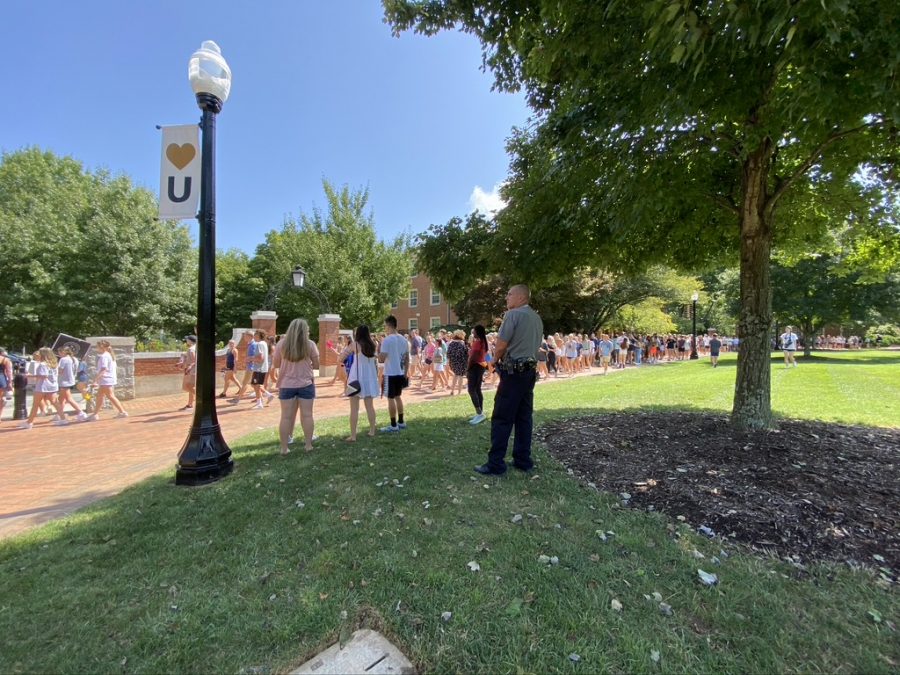Wake Forest leaves students to fend for themselves
Administration’s response exhibits disturbing passivity regarding protection of students
Protesters walk to the quad to continue the protest.
September 2, 2021
On Aug. 28th, 2021 at 12 p.m., hundreds of Wake Forest students gathered in Poteat Residence Hall to protest the re-admission of a known sexual predator (with multiple convictions through Wake Forests Title IX policy). The protest, sparked by popular social media app Yik Yak, demonstrated how this incident galvanized the student body into protecting women and survivors of assault on campus. While it has been inspiring to see the student response to this issue, one thing remains certain — it isn’t their job to ensure their own safety on campus and it shouldn’t be.
The Wake Forest Administration has not only been slow to respond to the issue but has demonstrated a remarkable amount of apathy for a problem so pervasive. The protesters were unable to meet with a member of the admin on the day of the protest to voice their concerns. The other residents of the hall in which the student lives had also not been informed of his return to campus, and neither had the students who filed the initial complaints against him in 2019.
In addition to this, Wake Forest’s Administration released a series of vague responses over the course of the past week, in which they attempted to reassure students by stating that they “take all concerns about student conduct seriously” and “have systems and protocols in place to treat every student with integrity and compassion”. They also encouraged impacted students to reach out to the supportive resources they have provided on campus — which include the same Title IX office that could not remove this individual from campus.
Unfortunately, women and survivors of sexual assault are not the only students to have been let down by the administration’s lack of response. These developments have sparked incidents of targeting male black students endangered by racial profiling on campus, another omnipresent issue to which the Wake Forest admin has not yet responded to. Instead, the students have had to take it upon themselves to protect themselves and their peers. Although admirable, the fact that it has had to come to this feels dystopian.
A harsh reality that every Wake Forest student is gradually coming to terms with is that the institutions we have tasked with keeping our campus safe are not accomplishing this objective.
The outcry sparked by this student’s readmission has encouraged numerous Wake Forest students into sharing their stories and experiences of assault at Wake Forest, which has then highlighted the readmission of other sexual predators on campus, who had also been convicted through Wake’s Title IX policy. This seemingly isolated incident has revealed a serpentine and disturbing history of the admin’s passivity when Wake Forest students are endangered.
Yet, there is still so much the Wake Admin can do to protect their students. There need to be more educational programs on campus instead of just one survey students take in the first semester of freshman year. Initiatives such as the Green Dot Program which has been proven to prevent student-initiated sexual violence (American Journal of Preventive Medicine) need to be adapted and implemented on campus to encourage bystander prevention. There need to be training and re-education programs directed towards men who still feel entitled enough to forgo consent, instead of towards women who are already armed with tasers and mace, to mitigate the sickening culture of victim-blaming that is so pervasive on campus. There need to be harsh enough punishments for perpetrators of assault (ones that don’t involve reincorporating them into the student body) so that students are aware that their actions will not go unchecked, there will be consequences and victims will receive justice.
Wake Forest’s insufficient reaction to this issue is not from a lack of ability, nor from a lack of necessity.















